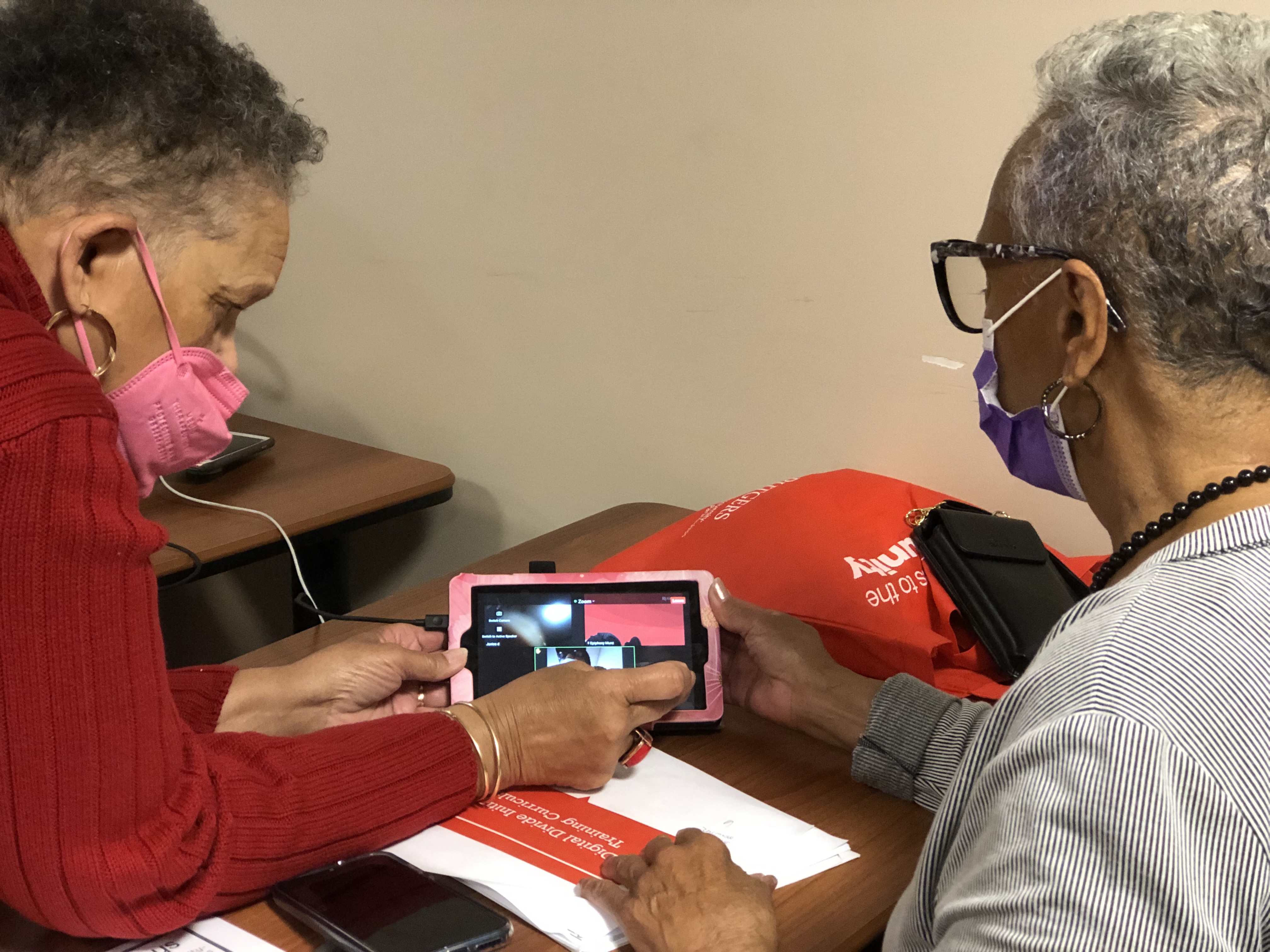By Epiphany Munz, Donita Devance, and Diane Hill, Ph.D.
The World Health Organization (WHO) published the Global report on ageism to call attention to the discrimination that older adults face, along with recommendations for a framework to reduce its adverse effects, explaining “ageism pervades many institutions and sectors of society, including those providing health and social care, the workplace, the media and the legal system. Healthcare rationing on the basis of age is widespread, and older adults tend to be excluded from research and data collection efforts. Ageism also shapes how statistics and data, on which policies are based, are collected.”
Through the lens of digital adoption and usage, the lack of data collected on older adults is shown in the persistent digital divide gap affecting those who are 65 years of age and older. Older adults tend to be left out of technological development and application processes due to ageist stereotypes. These implicit biases further remove older adults from accessing resources that most people benefit from, which was especially prevalent during the COVID-19 pandemic. As a result, older adults may succumb to internalized ageism and perceive themselves unable to adapt to digital technologies in their everyday lives (Chu, et al. 2022; Rosales, et al. 2019).
Additional research shows different methods to combat ageism, which include implementing an intergenerational approach to positive reinforcement (Fang, et al. 2023) and media catered to older adults should allow them to have a voice to better represent themselves and prevent harmful stereotypes (Ivan, et al. 2020).
The Senior Connect Digital Divide project coordinated by the Office of University-Community Partnerships (OUCP)/Center for Health Equity and Community Engagement (CHECE) provides a local perspective. A total of 137 individuals completed intake surveys at seven senior-serving partner sites in Newark, East Orange, Hillside, Roselle Park, and Roselle, New Jersey, beginning in August 2022. Participants ranged in age from 50 to 92 years, with a median age of 74.1 years. Of these, 26% of the sample were aged 80 and above; 47% were between 70-79 years of age; and 27% were 69 years of age or younger.
The survey asked respondents a series of questions related to their current use of the internet and internet-ready devices. Less than half of respondents (47%) reported that they currently used an internet-ready device. At 59%, respondents aged 60–69 were most likely to do so, followed by approximately half of respondents aged 50-59 (50%) or 70–79 years old (48%). Only 38% of participants ages 80 and older indicated current use of a device.
In terms of their level of comfort using the internet, 16% indicated that they were not at all comfortable; almost one-third indicated some level (31%) or a moderate level (31%) of comfort, and 22% indicated that they were comfortable or very comfortable. Interestingly, persons in the 69 and younger age grouping were most likely to indicate that they were not at all comfortable with internet use. Conversely, those in the 80+ category were more likely to indicate greater levels of comfort (comfortable to very comfortable) than their younger counterparts.
Connecting to church and other religious events (66%), family (61%), entertainment (61%), and general information seeking (60%) were the most common ways current users employed the internet. However, connecting to health care (68%), health information (63%), and family (59%) received the most interest prospectively.
As anticipated, older adults in our sample were less likely to currently use an internet-ready device than would be expected among their younger counterparts. While we interpret these findings with caution, our preliminary findings suggest that older adults have an interest and desire to use the internet to enhance their lives if access and other barriers could be effectively addressed.

